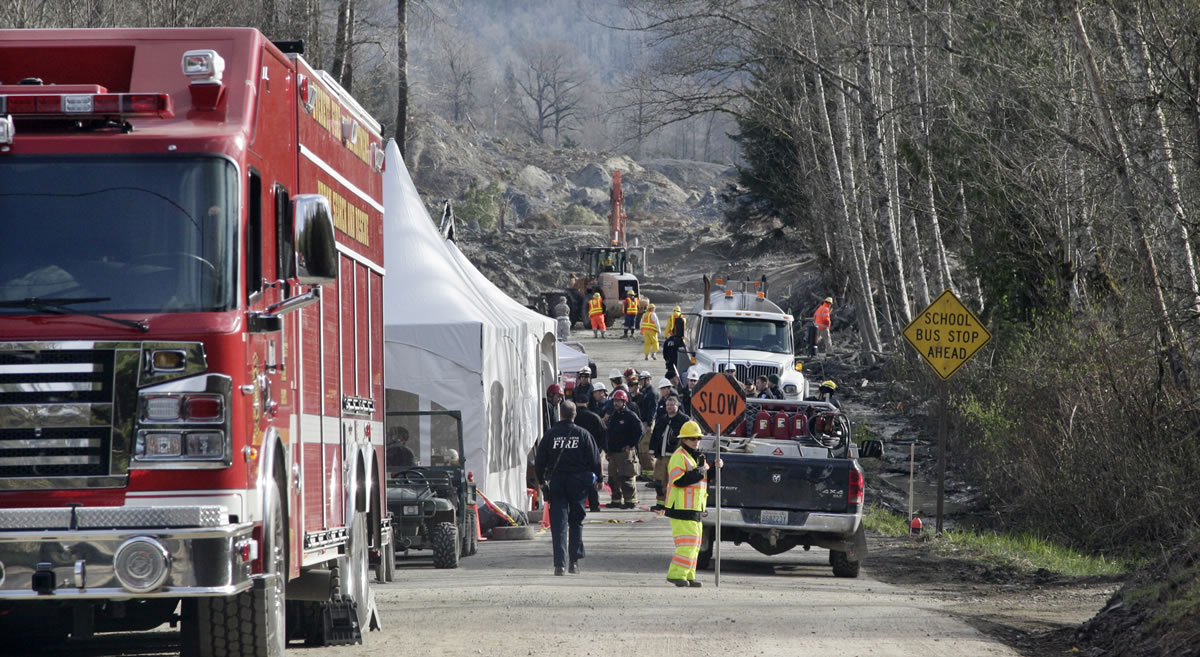OSO — Authorities monitoring the site of a deadly landslide north of Seattle say the risk of chemical and biological contamination are minimal, but they’re taking precautions to protect rescuers and other workers.
Dick Walker, spill responder for the Department of Ecology, said the hazardous materials at the disaster site include items typically found in households — such as cleaners, pesticides, motor oil and bleach — but they were likely diluted by the massive flow of mud and debris that leveled homes in the residential neighborhood and killed more than two dozen people.
“The chemical contamination out here is very minimal,” Walker said during a Friday news briefing.
The slide, one of the deadliest natural disasters in Washington history, struck March 22.
Officials also say they haven’t identified any immediate health concerns but they plan to monitor public health issues in the community. They’re advising residents not to drink water from wells until those wells have been decontaminated.
Walker said the biggest hazard at the site has been navigating fallen trees, piles of debris, and other obstacles as workers wade through the mud and sludge looking for remains nearly two weeks after the hillside collapsed.
Dr. Richard Bradley, incident medical officer with the Federal Emergency Management Agency, said workers have reported sprains, cuts and injuries from stepping on nails, but no one has been seriously hurt or hospitalized as a result of working on the debris field.
“Our primary concern has been worker safety,” Bradley said, adding that he thought the biological exposure to individual rescuers was no greater than what one would encounter in such a forested setting. The riverfront community of several dozen homes is nestled in the foothills of the North Cascade Mountains.
About 50 homes were on septic tanks, which may pose a problem if the tanks leaked human waste. But officials said searchers and other workers are required to wear protective gear and go through a decontamination process after they have been out on the debris field. Equipment is hosed down with high-pressure water, while people and dogs are rinsed with a soapy water solution and sprayed to remove mud and possible contaminants.



